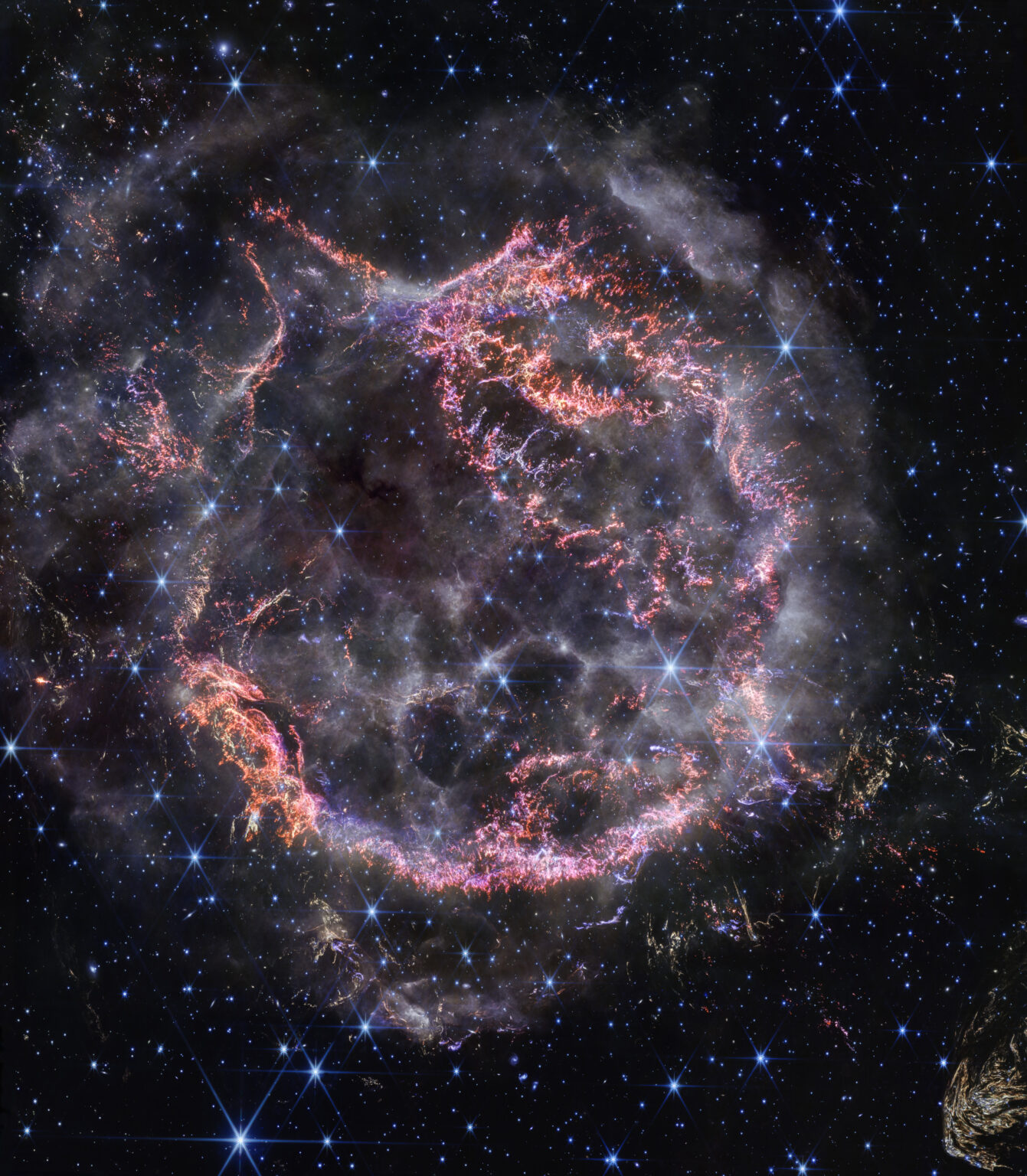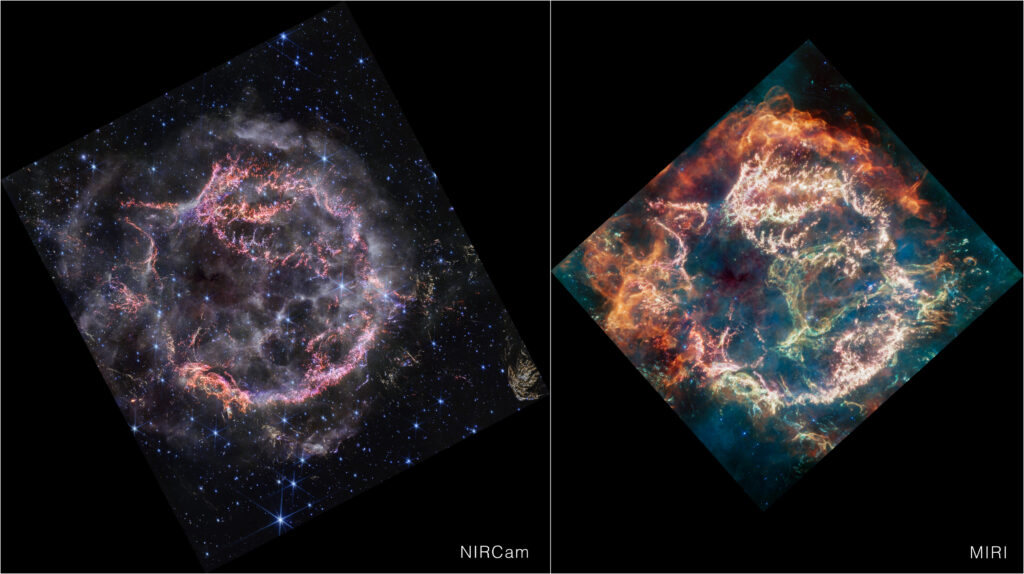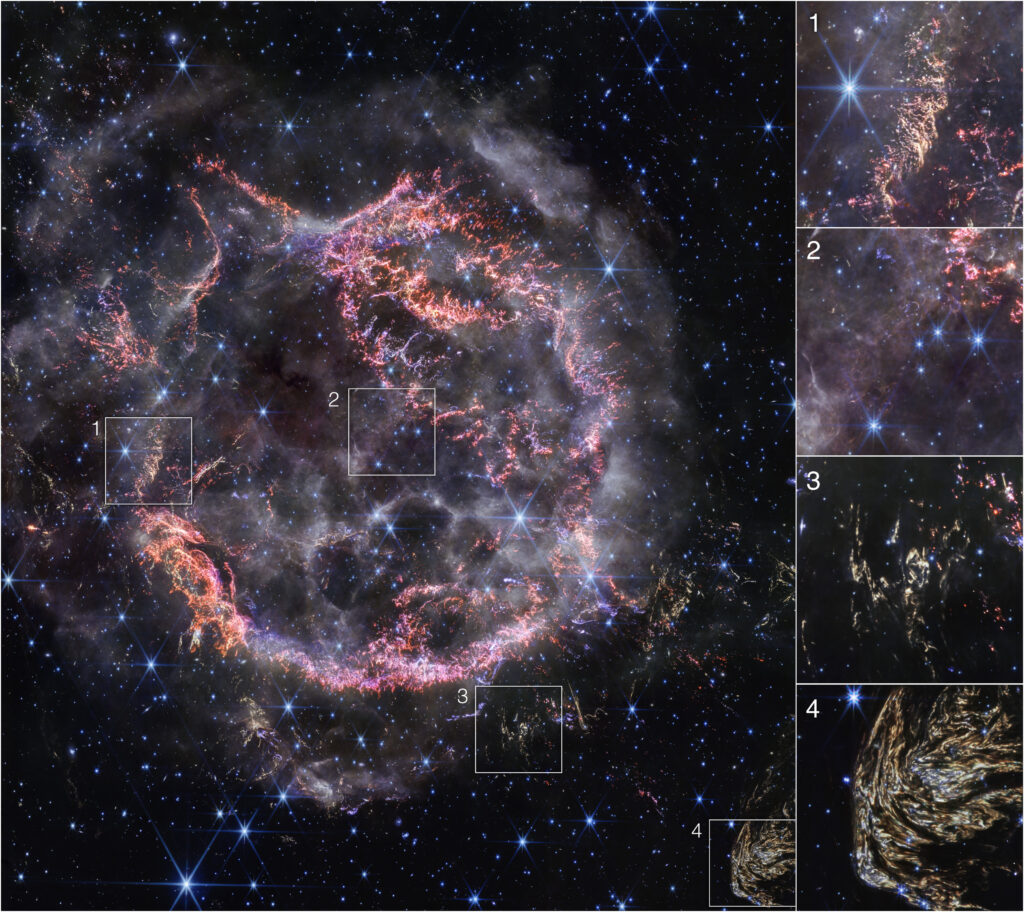Astronomers working with the James Webb Telescope published a new detailed image of Cassiopeia A. This is one of the most famous and closest supernova remnants to Earth.
Remnant of the dead star
Cassiopeia A has long attracted the attention of astronomers. It is located 11,000 light-years from Earth and represents one of the youngest supernova remnants in the Milky Way. It is believed that the light from its flare should have reached our planet about 340 years ago. However, astronomers did not notice this event. There is an assumption that shortly before the explosion, the star ejected a large amount of matter. It enveloped it tightly and absorbed the light from the flare.

It was only in 1947 that astronomers discovered a powerful radio source in the constellation Cassiopeia, which was later correlated with the remnant of the supernova. Subsequently, it was possible to identify it in the optical range. Observations have shown that the substance of the supernova remnant is heated to a temperature of about 30 million degrees and expands at a speed of 4-6 thousand km/s.
Supernova remnant through the eyes of James Webb
Due to its proximity to Earth and its youth, Cassiopeia A is the object of close study by many astronomers and astrophysicists. It has been photographed repeatedly by both ground-based observatories and space telescopes, including Hubble, Chandra and IXPE. At the beginning of 2023, JWST joined this list. It photographed Cassiopeia A in the mid-infrared range, revealing a number of previously unknown structures. Now, JWST made repeated observations, taking a picture in the near infrared range.
At first glance, the new photo is less colorful than the previous one. But this does not mean that it is less informative. It’s all about the waves on which the substance radiates.

The new JWST photo allows us to examine in detail the structure of the supernova remnant and its constituent shreds of gas and dust containing elements such as sulfur, oxygen, argon and neon. In the future, they will become part of new star systems and, perhaps, help form a new life.
To understand the scale, it is worth saying that the size of the smallest accumulations of matter that can be distinguished in the JWST image is 16 billion km (100 AU). For comparison, the distance between the Sun and Neptune is 4.5 billion kilometers. The size of the entire supernova remnant exceeds 10 light years, or 96 trillion kilometers.
When comparing two JWST images, it is easy to notice that the colors are less saturated in the near infrared range. In the previous picture, they were orange-red in color. Now they look like smoke from a campfire. This is the place where the supernova shock wave crashes into the surrounding circumstellar matter. The dust in the circumstellar matter is too cold to be detected directly in the near infrared, but it glows in the middle infrared.

At the same time, the researchers discovered a new detail that had previously eluded them. It is located in the lower right part of the frame and resembles a striped spot. It’s a light echo. The light from the supernova flare reaches and heats the distant dust, which glows, gradually cooling down. Despite its apparent proximity, this structure is actually located about 170 light-years behind the supernova remnant.
According to https://esawebb.org
Follow us on Twitter to get the most interesting space news in time
https://twitter.com/ust_magazine


